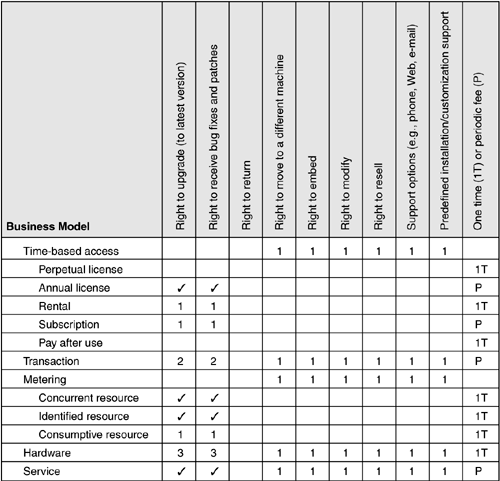Rights Associated with Business Models
| Marketects choose business models to maximize the benefits to their business. Associated with each of the business models just described is a set of rights and restrictionsthings you can do or things you get and things you cannot do or things you do not get. I've covered a few of these already, such as the right to use, the right to upgrade, and you can only run this software on one computer. Your business model should distinguish as many rights and restrictions as possible, because each right is a way of capturing and/or extracting value from your customer and each restriction is a way of protecting your interests. Many business models, for reasons of convenience, competitive advantage, or common practice, often create a standard licensing model that blends a variety of rights and restrictions into a single package. Remember, however, that separating them can create greater value. For example, an annual license to use the software (the business model is time-based access) commonly includes the right to use and the right to receive upgrades but not the right to receive technical support. A subscription to a software-based services model (such as America Online; the business model is service or metering depending on customer choices) may include all of these rights. This section reviews some of the rights commonly associated with various business models. Figure 4-1 outlines some the rights and restrictions associated with particular business models. The columns list specific rights or restrictions; the rows are the business models. A check means that this right is commonly allowed by the business model. A number means that the right may be allowed by the business model and will be discussed in greater detail. I've added a column that addresses whether or not the fees paid by the licensee are one time or periodic. The timing of fees can affect the choice of model. Figure 4-1. License rights and business models The table's focus is the subset of license models most closely correlated with various business models. It does not attempt to capture every possible legal issue that can be defined in a license: exclusivity, warranties, indemnifications, intellectual property rights, confidentiality, or any number of other things that a savvy lawyer can think of. Most of these are not a function of the model but of larger corporate policy that governs every license model, regardless of the business model.
|
EAN: N/A
Pages: 202
